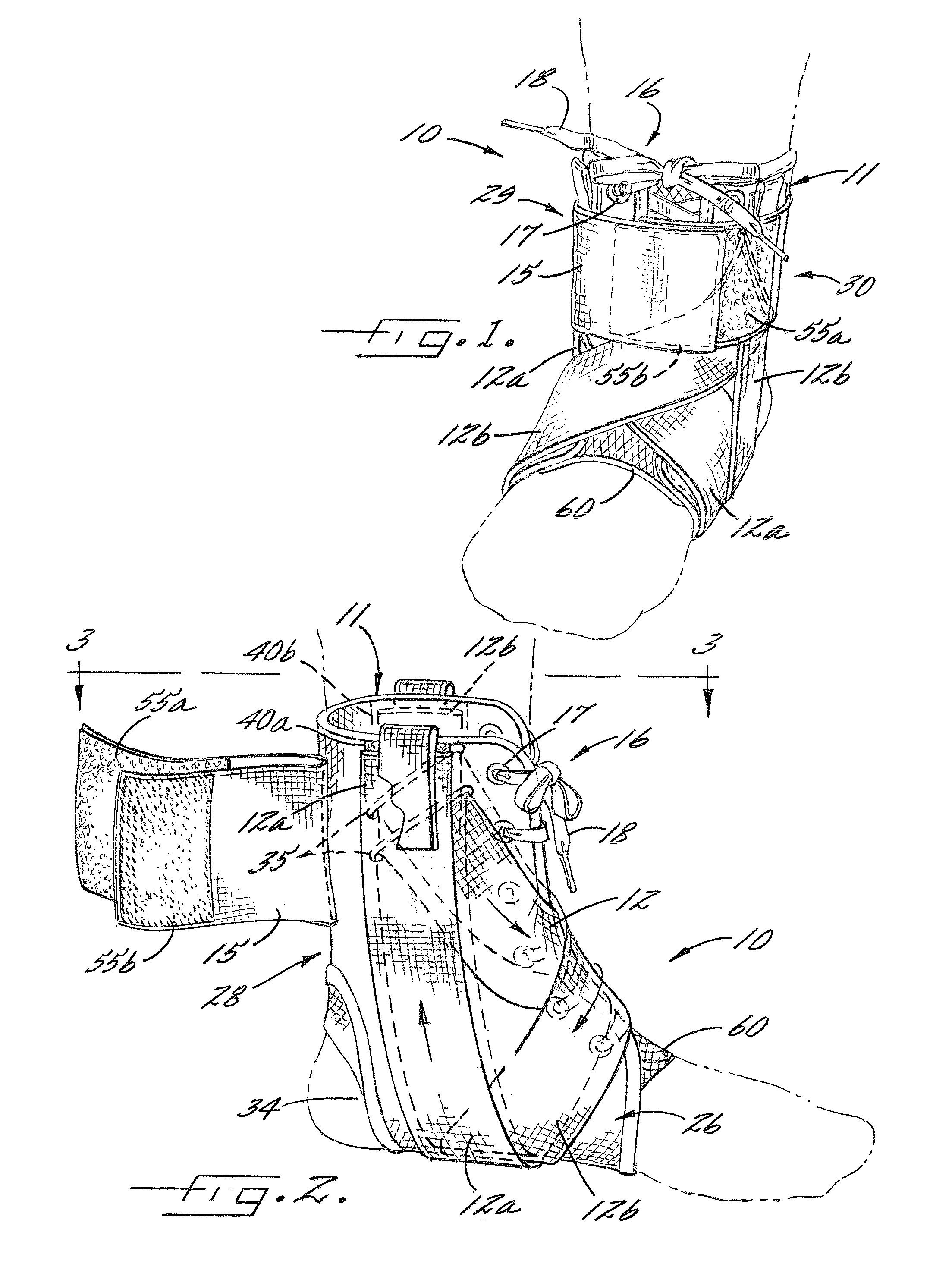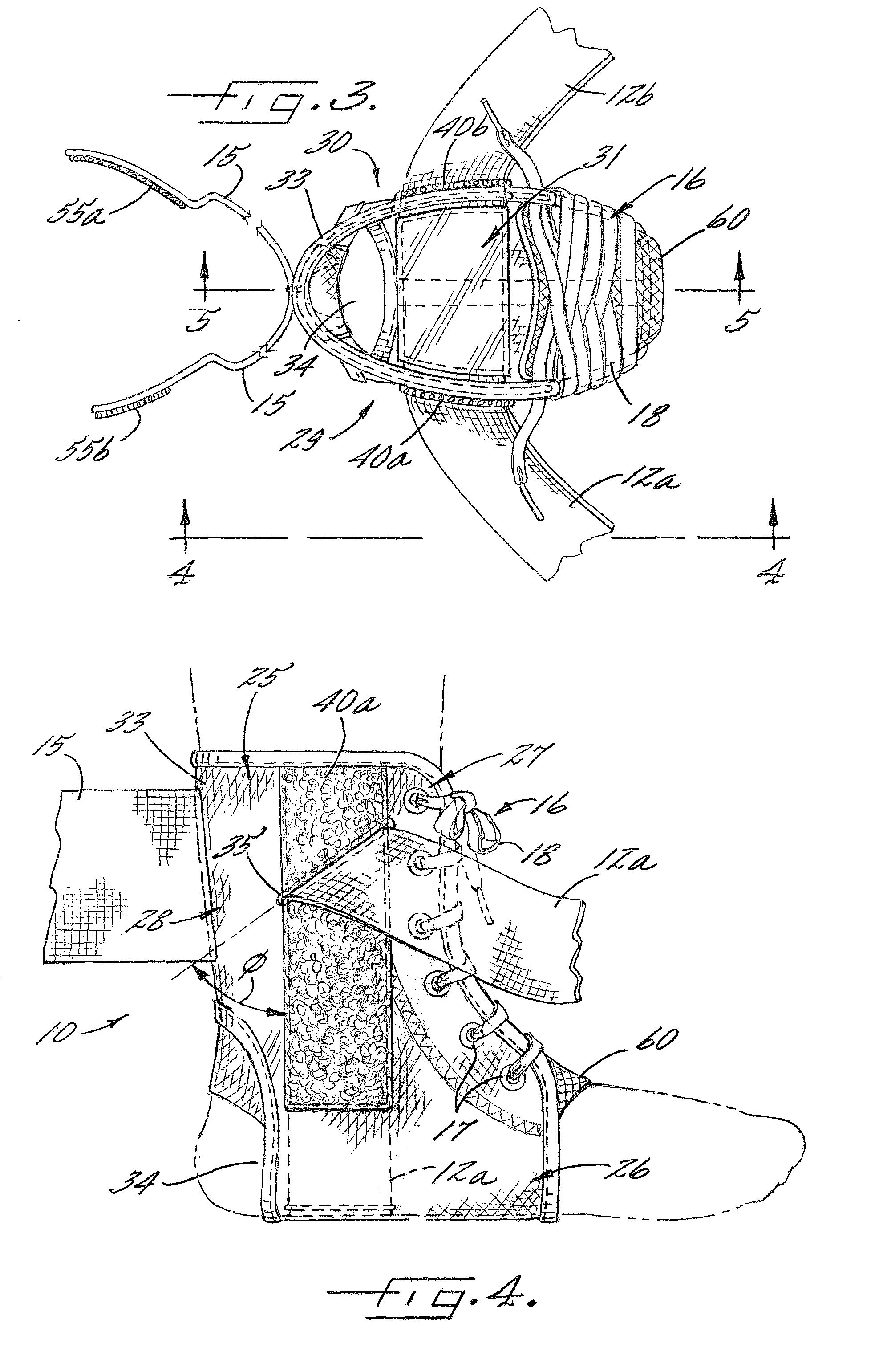Ankle stabilizing apparatus having a dynamic cuff and stabilizing strap system
a dynamic cuff and stabilizing strap technology, applied in the field of ankle stabilizing equipment, can solve the problems of reducing so as to improve the stability of the ankle and foot, prevent sprains, and increase the amount of tension
- Summary
- Abstract
- Description
- Claims
- Application Information
AI Technical Summary
Benefits of technology
Problems solved by technology
Method used
Image
Examples
Embodiment Construction
[0026]The present invention will now be described more fully hereinafter with reference to the accompanying drawings, in which a preferred embodiment of the invention is shown. This invention may, however, be embodied in many different forms and should not be construed as limited to the embodiments set forth herein. Rather, these embodiments are provided so that this disclosure will be thorough and complete, and will fully convey the scope of the invention to those skilled in the art. Like numbers refer to like elements throughout.
[0027]An overall view of an embodiment of an ankle apparatus of the invention is set forth at 10 in the perspective view of FIG. 1. The apparatus 10 may be worn without an athletic sock such that interior surfaces of the apparatus contact skin of the individual. Alternatively, the apparatus 10 may be worn over an athletic sock such that interior surfaces of the apparatus contact the sock. Further, the apparatus 10 is configured for wear on the right or lef...
PUM
 Login to View More
Login to View More Abstract
Description
Claims
Application Information
 Login to View More
Login to View More - R&D
- Intellectual Property
- Life Sciences
- Materials
- Tech Scout
- Unparalleled Data Quality
- Higher Quality Content
- 60% Fewer Hallucinations
Browse by: Latest US Patents, China's latest patents, Technical Efficacy Thesaurus, Application Domain, Technology Topic, Popular Technical Reports.
© 2025 PatSnap. All rights reserved.Legal|Privacy policy|Modern Slavery Act Transparency Statement|Sitemap|About US| Contact US: help@patsnap.com



